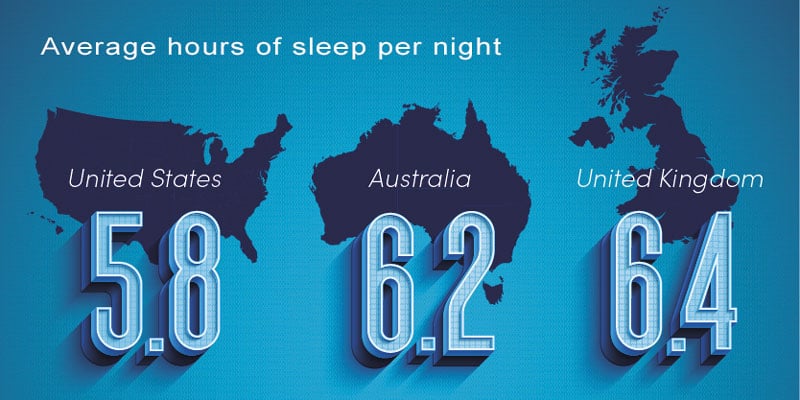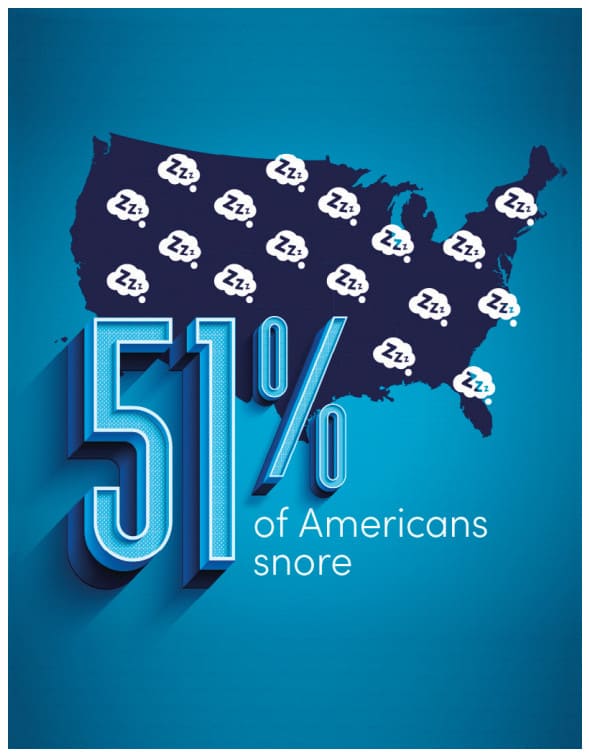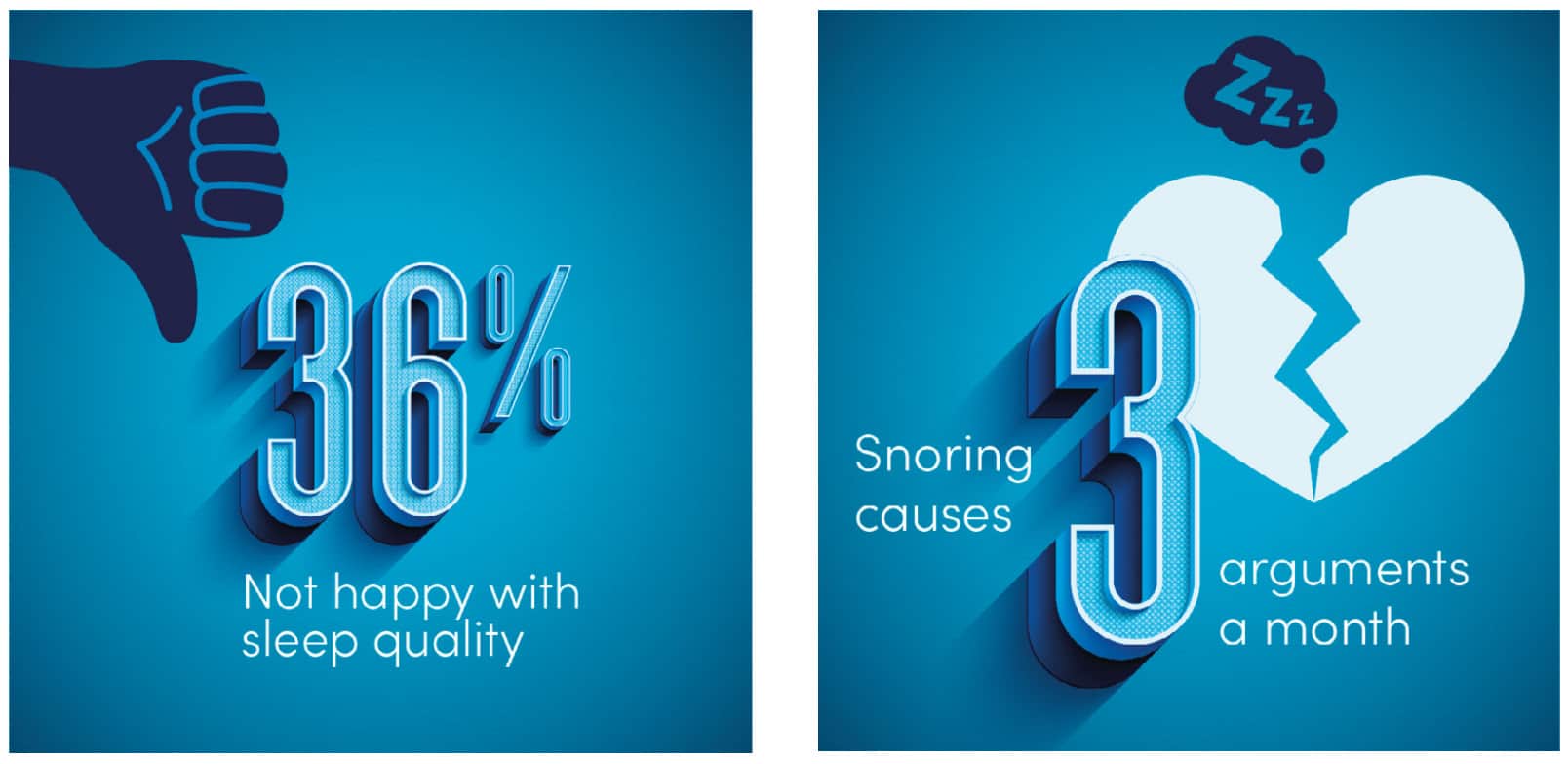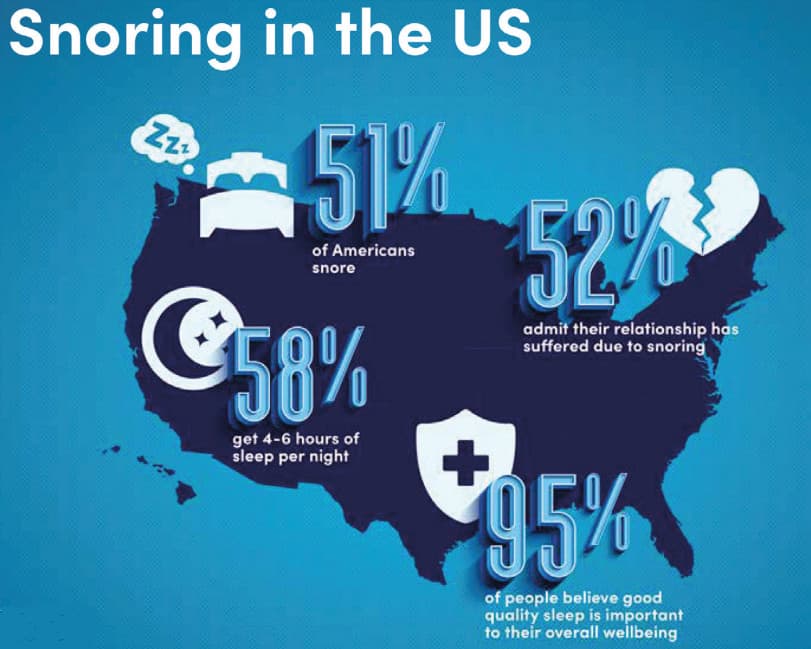Dr. Howard Hindin offers information from the Mute 2022 Annual Global Sleep & Snoring Report that can help patients who suffer from the vicious cycle of snoring.
 The Mute 2022 Annual Global Sleep & Snoring Report Sheds Light on the Pervasive Problem
The Mute 2022 Annual Global Sleep & Snoring Report Sheds Light on the Pervasive Problem
by Howard Hindin, DDS
All of us who have joined me down the sleep / airway rabbit hole, continue to feed our passion and motivation with the successes we have, the people we help and the lives we change. Yet, as you will see, still only a small percentage of sufferers are recognized and treated. We have been preaching for years that more data is needed to move the needle of awareness. The Mute 2022 Annual Global Sleep & Snoring Report provides a wealth of information about how extensive this problem is and the work needed to be done.
The Mute Report is a study of 6,000 adults in the United Kingdom, the United States, and Australia. The report found that 96% of people believe quality sleep is very or somewhat important to their overall wellbeing, but only 64% are happy with the quality of their sleep.1 The problem? 51% say their own snoring; and 50% say someone else’s snoring.2

It’s not surprising that all that nocturnal noise has serious consequences, most notably sleep deprivation. According to the study, which was commissioned by nasal dilator brand Mute and conducted by One Poll, 42% of people say they wake up so tired that their everyday life is negatively affected, causing them to have trouble concentrating, to become argumentative, and even to nap at work.3 More than half admit that snoring is causing problems in their relationships.4
That last statistic is understandable considering that snoring impacts the snorer as well as their partner, primarily in regard to sleep deprivation. A full 50% of survey respondents accused their partner of snoring, 44% said their partner’s snoring was worse than their own, and 25% said it is the most annoying thing their partner does.5 While wrestling with sleep here in the U.S., 39% of snorers’ partners kicked, nudged or elbowed their noisy loved one; 23% slept in another room.6

Whether due to snoring, stress or anxiety, the majority of adults in the study are not achieving the coveted – and medically recommended – seven or eight hours of sleep per night. In the U.S., just 32% of adults achieve that idyllic number. Aussies and Brits fare somewhat better with 42% and 47% enjoying the suggested amount of sleep respectively.7
Taking the survey as a whole, a troubling trend emerges: a vicious cycle of widespread snoring leading to sleep deprivation leading to stress that ultimately has a physiological and psychological impact on individuals, partners, friends, families, co-workers, and communities. And nearly 122 million adults in the U.S. alone are caught in this cycle.8 Does this constitute a public health crisis? Perhaps it should.

It is well noted that insufficient sleep can lead to an increased risk of developing a number of chronic illnesses, such as cardiovascular disease, depression, obesity, and type 2 diabetes.9 Further, there is direct evidence linking obstructive sleep apnea to these diseases. In fact, it is estimated that between 40 – 60% of patients with cardiovascular disease also have obstructive sleep apnea.10
It is also well documented that sleep apnea and snoring are nearly always the result of a partially blocked airway due to structural or physiological condition of the mouth, jaw, nasal passages, tongue, or throat.11 In this sense, sleep apnea and snoring are symptoms of an Airway-Centered Disorder, a problem that impacts breathing 24 hours a day – not just but primarily during sleep – and that itself can lead to chronic health issues along with developmental, educational, and performance issues.12
By understanding and accepting that breathing disorders, airway disorders, snoring, sleep apnea, sleep disruption, and chronic illness are interrelated, the medical community can work together to apply functional medicine best practices to not only quiet the droning din but to positively impact the underlying disorder(s) causing it. Working together, sleep physicians, sleep dentists, ENTs, neurologists, pulmonologists, speech pathologists, and others have the ability to not only treat the symptoms of sleep apnea and snoring but to genuinely improve life quality through better breathing and better sleep.
Back to the Mute survey, the data shows that 22% of adults just here in the U.S. have talked to their doctor in an effort to improve their sleep.13 The survey didn’t dive deeper into the types of doctors consulted or the results of those discussions, but with an estimated eight million CPAP (Continuous Positive Airway Pressure) machines sold in the U.S. annually, there’s a good chance those doctors are sleep specialists.
While seeing a sleep specialist is a logical first step in a patient’s journey to get better sleep, this should not be the only step, because, while CPAP machines are often a good solution, they are not always the only solution. This is where the functional medicine approach to patient care can make a significant difference. Working together with medical professionals with different specialties and subspecialities, a sleep doctor might refer a patient to a speech pathologist for myofunctional therapy, an orthodontist for possible mouth expansion, or a sleep dentist for a fitted mouthpiece. And vice-versa.
If the end goal is to improve breathing, any and all specialists might be consulted to address the myriad of issues that could be at play causing snoring, sleep apnea, poor sleep, and the implications of each. The more information a patient has, the better decision they can make. The better the decision they make, the better sleep they get. The better sleep they get, the less argumentative, forgetful and tired they are. At the end of the day, it is collaboration by the right team of practitioners for each patient that will achieve optimal results. And with optimal results, the vicious cycle comes to an end, one patient – and their loved one – at a time.
Dr. Harvey Shiffman wrote about a laser that can be used to control snoring in his article “Laser-focused to Reduce Snoring.” Find it at: https://dentalsleeppractice.com/laser-focused-to-reduce-snoring/
- Mute 2022 Annual Global Sleep & Snoring Report. 6, 7
- Mute 2022 Annual Global Sleep & Snoring Report. 10
- Mute 2022 Annual Global Sleep & Snoring Report. 8
- Mute 2022 Annual Global Sleep & Snoring Report. 11
- Mute 2022 Annual Global Sleep & Snoring Report. 10, 11, 13
- Mute 2022 Annual Global Sleep & Snoring Report. 15
- Mute 2022 Annual Global Sleep & Snoring Report. 6
- Mute 2022 Annual Global Sleep & Snoring Report. 6
- Sleep and Chronic Disease. www.cdc.gov/sleep/about_sleep/chronic_disease. 2018
- AHA Journals. Obstructive Sleep Apnea in Cardiovascular Disease. www.ahajournals.com. 2018
- Foundation for Airway Health. www.airwayhealth.org.
- Foundation for Airway Health. www.airwayhealth.org.
- Mute 2022 Annual Global Sleep & Snoring Report. 15
 Dr. Howard Hindin is co-founder and chairman of the Foundation for Airway Health and the current president of the Academcy for Physiological Medicine and Dentistry. Dr. Hindin has more than 50 years of practice experience and is a pioneer in the relationship between dental issues and whole-body health.
Dr. Howard Hindin is co-founder and chairman of the Foundation for Airway Health and the current president of the Academcy for Physiological Medicine and Dentistry. Dr. Hindin has more than 50 years of practice experience and is a pioneer in the relationship between dental issues and whole-body health.


